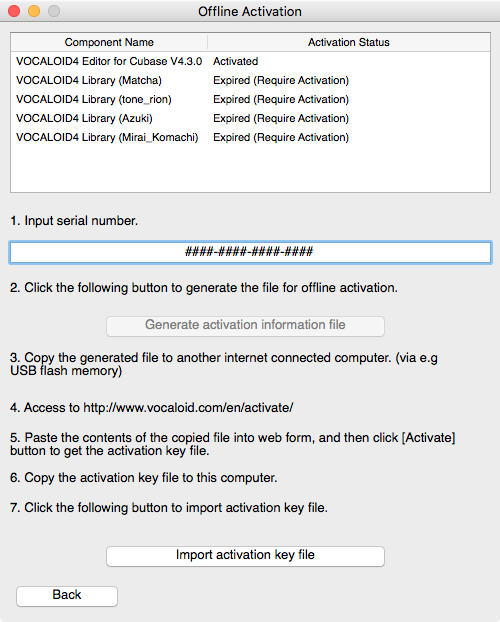

They have somewhat limited parameters compared to dedicated third-party plugins but sound good despite their limitations.
#Vocaloid editor online professional#
The internal audio effects work well enough for getting your vocals to a basic professional level. The singing style you chose earlier may have audio effects activated for the preset, Vocaloid contains 11 internal effects units to further shape the tone and quality of your singer’s voice! Clicking the button in the upper right corner will take you to the mixer section where you can adjust levels, pan tracks, and insert/control audio effects. Vocaloid 5 is designed so you don’t have to put too much time into this feature but the more you do the more precise and nuanced your vocal performance will be. The available controls for expression are addicting to work with and finetune. This section is the most tedious but honestly the most fun. The emotion button (left-most button under ‘Control’) will adjust how much vibrato your singer inserts into each syllable. Click on the Attack and Release parameters (buttons under the label ‘Control’) to bring up a section where you can choose Pitch, Dynamics, Tone, and Ornamentation of the beginning and end of each lyric. If you go back to the Musical Editor you will find the ability to precisely shape your singer’s delivery and expression. Selecting options within those two browsers will then display a few options for presets that contain those characteristics. It works as a browser where you can choose options and narrow it down based on certain characteristics like Type of singing (lead, background, etc.), then the Color of their voice (bright, cute, chaos, lo-fi, whisper, etc.). The Style tab is where you can really get specific about the qualities of your singer’s voice. Once you’ve decided which you like you can start to shape their singing style in the next tab labeled Style.
#Vocaloid editor online how to#
Watch the short video below to learn how to input lyrics! It’s impressive how intuitive it feels as you learn how to do it. While it isn’t immediately obvious how to split words up over notes the development team created a great system that is easy to pick up after using a few times. There is a bit of a learning curve for getting the cadence of the singing just right but that varies depending on how wild you want to get with your lyrical delivery.

Double clicking on the notes will give you the ability to type in lyrics (you can also right click and select to open a dialog box to type into). The Musical Editor section is where you can draw in MIDI data for the singer’s melody. Click on a Vocaloid layer and you’ll be taken to a zoomed in view where there are then essentially five sections for inputting pitch, lyrical data, controlling associated parameters and internal mixing. There you can add audio tracks or more Vocaloid layers. You’ll be greeted by a zoomed out version of the Musical Editor which looks similar to an arrangement section found in most DAWs. Right away it’s clear how to get started due to the interface looking so intuitive. The standard pack comes with four voices – Amy, Chris, Ken, and Kaori (we’ll go over those later), and the premium package comes with an additional four voicebanks – VY1, VY2, CYBER SONGMAN II, CYBER DIVA II (we only tinkered with the standard version so these voicebanks will not be featured in this article). Also, a wider range of singers has been added to the lineup to incorporate more diverse singing styles. Major overhauls have been made to the workflow in order to improve efficiency for producers.


 0 kommentar(er)
0 kommentar(er)
